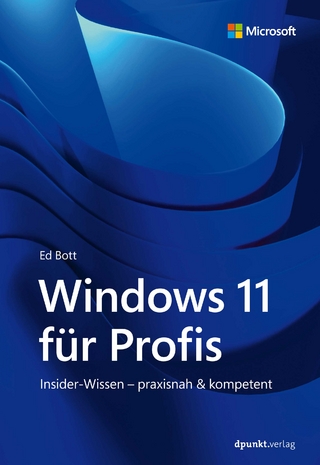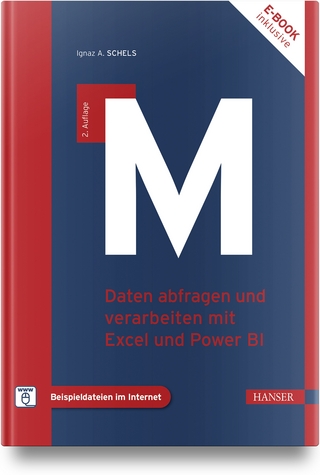
Windows 2000 Security
New Riders Publishing (Verlag)
978-0-7357-0991-1 (ISBN)
- Titel ist leider vergriffen;
keine Neuauflage - Artikel merken
There is no single, credible reference available for Windows 2000 security issues. Existing and announced books all offer glimpses of outdated and simplistic issues, while Roberta Bragg offers a clear vision, with focused and technically accurate practical advice. Like other books in the Landmark series, this book presumes knowledge of Windows 2000, or the willingness to look elsewhere for a guide to the Windows 2000 interface, as it is not a step-by-step guide to the operating system. (An excellent companion book would be Inside Windows 2000 Server) Its primary directive is to assist the Windows NT professional in understanding and implementing Windows 2000 security in their organization. The book is divided into four parts. Chapters will have a "best practices" section which will make recommendations for settings and security practices. An appendix will follow the main book and will include topics on auditing and security policy.
Roberta Bragg has run her consulting firm, Have Computer Will Travel, Inc., out of a laptop or luggable computer since 1985. In addition, she has worked as a salesperson, systems administrator, developer, author, university instructor, trade school teacher, and technical trainer. Current certifications include MCSE (Windows 3.51, 4.0, and 2000), MCT, MCP+Internet, and CTT. Mainframe moonlanding, 80 column cards, and Fortran are part of her ancient history. Virtual existence lies sometime in the future. You can find her on the Web as a security columnist at http://www.mcpmag.com/, an instructor at http://www.spu.edu/, and a security evangelist at http://www.peaceweaver.com.
(NOTE: Each chapter concludes with a Summary.)
Introduction.
Who This Book Is For. How This Book Is Organized. Conventions Used in This Book.
I. CONCEPTS AND DEFINITIONS.
1. Basic Security Concepts.
The Three A's of Security. Security Policy. Computer Security Objectives. Miscellaneous Security Terms. For More Information.
2. Cryptology Introduction.
Historical Background. Today's Cryptographic Algorithms. Common Cryptographic Algorithms. Methods of Attack. For More Information.
3. New Protocols, Products, and APIs.
Web-Related Protocols. Remote Access Protocols. IPSec. Secure Communication Between DHCP and Dynamic DNS. Microsoft-Specific APIs and Security Protocols. For More Information.
4. Public Key Infrastructure (PKI).
Certification Authority. Registration Authority. Certificates and Keys. Certificate Repository. Certificate Revocation List (CRL). Certificate Trust Models. Clients and Client Software. PKI Procedures. For More Information.
5. Kerberos in the RAW.
Kerberos Basics. Kerberos Components and Algorithms. Kerberos Trust Path. Encryptions and Checksums. For More Information.
II. SECURING THE OS.
6. Security from the Get-Go.
Users and Groups. Introduction to the Active Directory. Rights and Privileges. Windows 2000 NTFS. Default Registry Permissions. Soft Protection and Windows File Protection. The Windows 2000 Encrypting File System (EFS). Best Practices. For More Information.
7. User Authentication.
LM and NTLM Authentication. Kerberos in Windows 2000. The Big Picture: Network Logon. Get Smart! Using Smart Cards with Windows 2000. For More Information.
8. Lifecycle Choices.
Installation Do's and Don'ts for Improved Security. Maintenance. System Recovery: Repair Overview. Death and Dismemberment. Best Practices. For More Information.
9. Security Tools.
Using the Security Configuration and Analysis Tool Set. Group Policy. Support Tools. Resource Kit Tools. Choosing the Tool to Use. Best Practices. For More Information.
10. Securing Windows 2000 Professional.
Setting Up and Securing the User and Group Database. Windows 2000 Professional in a Windows NT 4.0 Domain. Managing Local Security Settings with Group Policy. Matching Security Settings to the Abilities of the User. Policy Implementation and Enforcement. Securing Wireless Connections. Protocols and Processes for Secure Data and Application Access. Administering a Windows 2000 Domain Using Windows 2000 Professional. Best Practices. For More Information.
11. Securing Windows 2000 Server.
Server Roles. Installation Security Defaults. Policy Settings. Server Security Templates. Using and Securing Terminal Services. Securing Interoperability Services. Best Practices. For More Information.
III. SECURING THE LOCAL AREA, MICROSOFT NETWORK.
12. Domain-Level Security.
Introduction to Active Directory (AD) Concepts. Dynamic DNS. Introduction to Distributed Security Services. Comparing Network Authentication Services: Kerberos and NTLM. Best Practices. For More Information.
13. Securing Legacy Windows Clients.
Improving Authentication Practices. Securing Network Communications. Improving Basic Systems Security. Best Practices. For More Information.
14. Securing the Distributed File System.
Improving Authentication Practices. Securing Network Communications. Improving Basic Systems Security. Best Practices. For More Information.
IV. SECURING REAL-WORLD NETWORKS.
15. Secure Remote Access Options.
Routing and Remote Access Service (RRAS). Internet Authentication Service (IAS). Terminal Services. Securing Remote Administrative Access. Best Practices. For More Information.
16. Securing the Network Using Distributed Security Services.
Active Directory Operations. Controlling Computers and Users with Group Policy Objects. For More Information.
17. Enterprise Public Key Infrastructure.
Windows 2000 Certificate Services Structure. Certificate Lifecycle. Group Policy for Public Key Infrastructure. Additional Certificate Services Security Practices. Certificate/PKI-Aware Applications. Best Practices. For More Information.
18. Interoperability.
UNIX Interoperability. PKI Interoperability. Macintosh. Novell. IBM Mainframe and AS400. Single Sign-On. Directory Integration: The Case for Metadirectories. Best Practices. For More Information.
19. Web Security.
Securing Windows 2000 Server. Securing the Web Site. Tools. Monitoring, Measuring, and Maintaining. Best Practices. For More Information.
20. Case Study in Interbusiness Access: Distributed Partners.
Business Model. Network Infrastructure Security. Active Directory Architecture Backbone. Authentication and Authorization. Public and Private Interface Processes.
Resources.
Books. Microsoft Site Information. Other Web Sites. White Papers.
Index
| Erscheint lt. Verlag | 25.10.2000 |
|---|---|
| Sprache | englisch |
| Maße | 178 x 228 mm |
| Gewicht | 930 g |
| Themenwelt | Informatik ► Betriebssysteme / Server ► Windows |
| Informatik ► Betriebssysteme / Server ► Windows Server | |
| Informatik ► Theorie / Studium ► Kryptologie | |
| ISBN-10 | 0-7357-0991-2 / 0735709912 |
| ISBN-13 | 978-0-7357-0991-1 / 9780735709911 |
| Zustand | Neuware |
| Haben Sie eine Frage zum Produkt? |
aus dem Bereich


